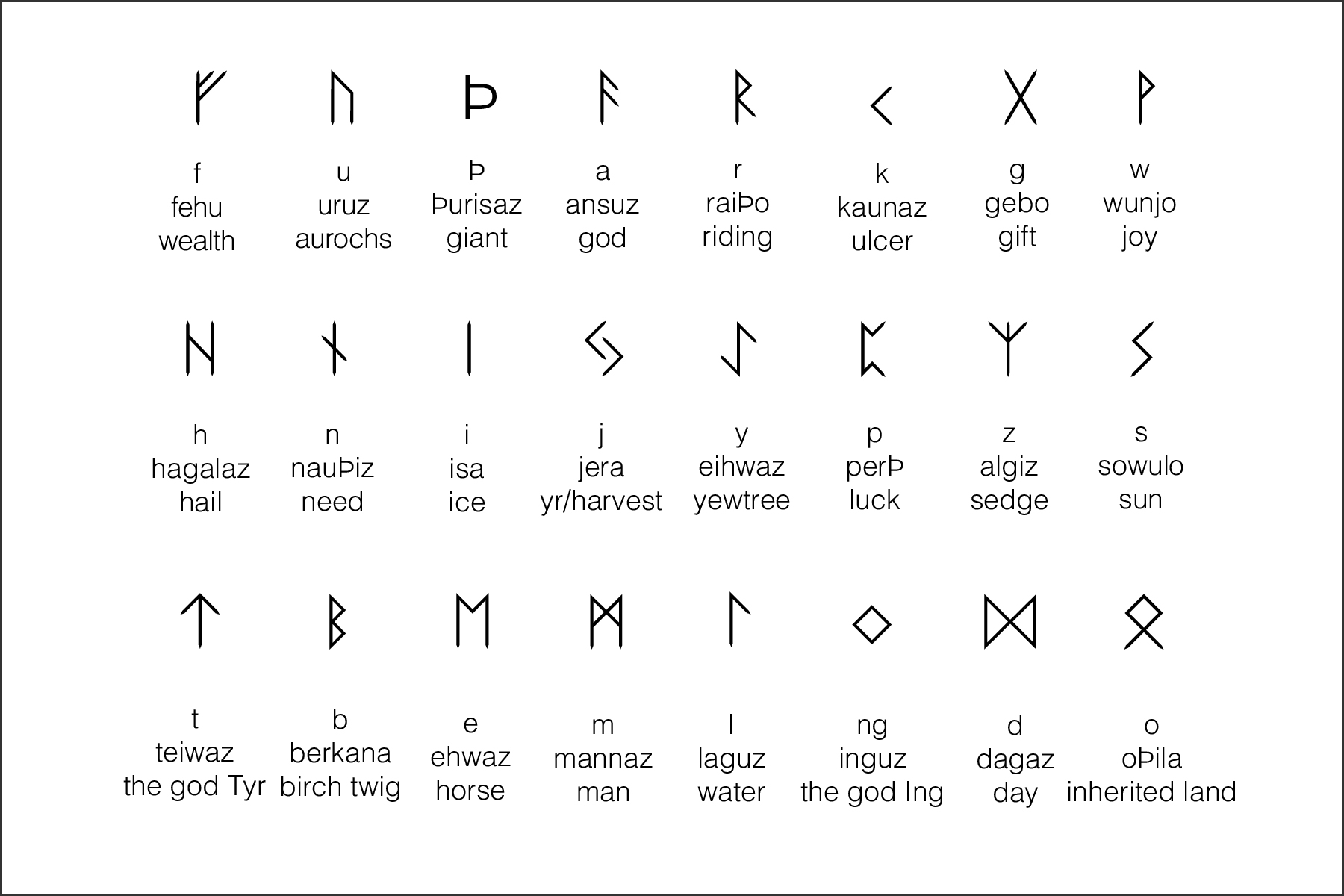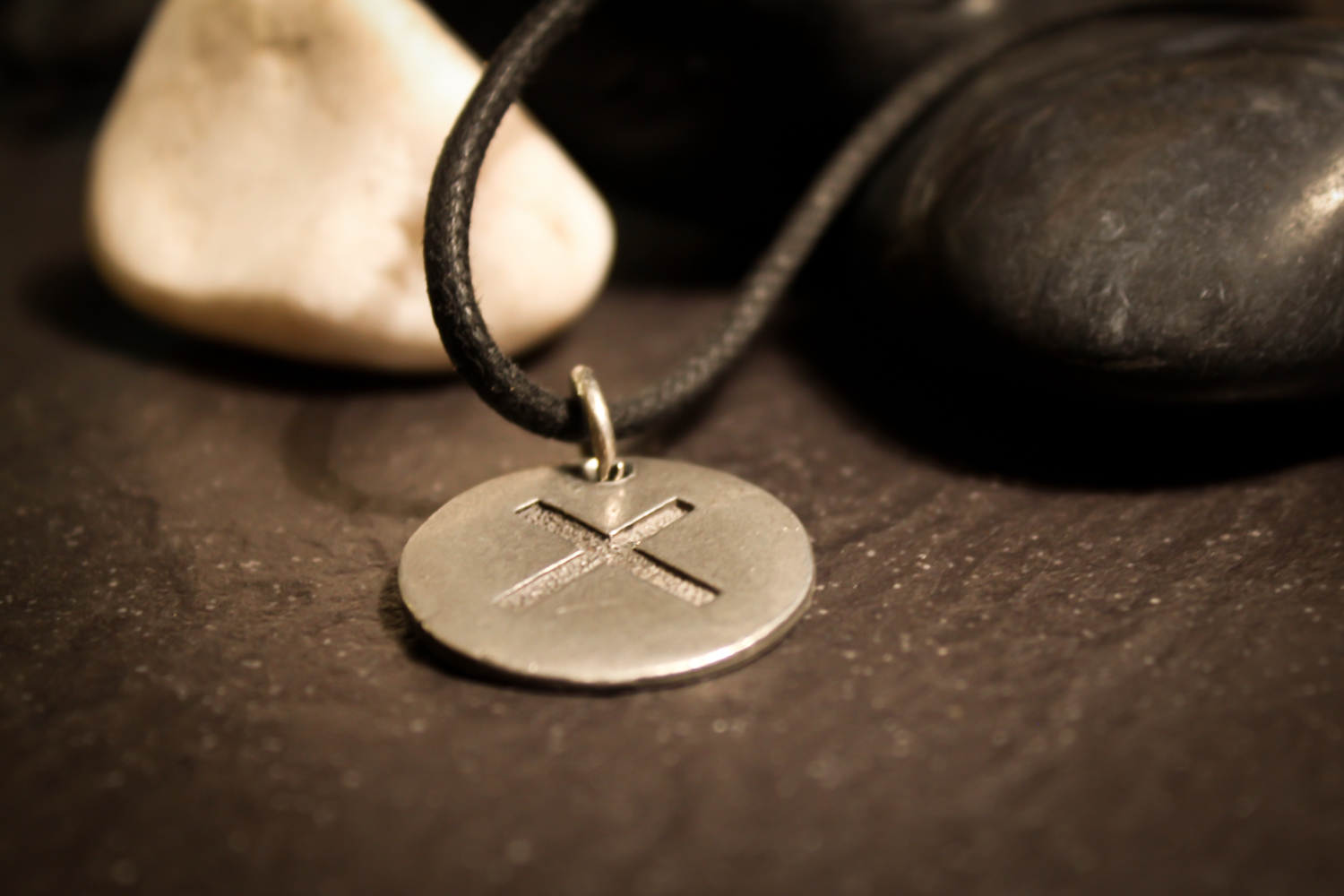Casting Runes
Nordic runes are loaded with meaning. The word rune itself has multiple meanings: 'letter,' 'secret' and 'mystery.'
-
 Rune Chart — Elder Futhark
Rune Chart — Elder Futhark -
-
As I am now nearing my third year of residence in Sweden, new friends have asked what it was I did for a living in my “old life.” This question always takes me a bit by surprise because I’m not sure which Old Life they refer to. The life which I lived in the U.S., or the one which I lived in a past life?
-
 Rune, Gebo — The gift
Rune, Gebo — The gift -
-
It does not escape me that Sweden is an old culture, so when someone asks me about a past life this might be a perfectly logical or even common question. It is, however, a question I can not answer. Much easier is it for me to refer to my recent past and explain that I studied and loved art history and that I once made a living writing about such pleasures.
-
I believe it is in part this love of art and history which also caused me to journey to Sweden. While I don’t find the arts community here in Gothenburg to be especially exciting — unless you love heavy metal music — Scandinavia’s rich history and mythology is certainly something worthy of attention. As an arts writer, I miss the influences of not only contemporary artists from around the world, but also the exhibitions of European masters presented by the great museums in NYC and Boston. I miss the history and knowledge one acquires from exploring such art works.
-
This need not be. The study of Scandinavia’s art and history, and also the study of ancient Nordic runes, fairy tales, folk tales and mythology is extremely rewarding and informs us in matters concerning a people, place and time. More at Nordstjernan on Norse mythology: Norse Mythology 101
-
It was from this exploration of Sweden’s past that I became interested in ancient Nordic runes. Used both as a form for message writing and of divination, runes were one of the first communication systems developed and used by Germanic people. But so much more than a mere alphabet for communication, runes represent ideographical or pictographic power. To inscribe a rune, or cast a rune, was to invoke the magic for which each rune represented.
-
The word "rune" has multiple meanings: "letter," "secret" and "mystery." Perhaps today we have only come to know of runes by reading Tolkien’s Lord of The Rings or watching Harry Potter, but back in the day, runes were a vital part of Scandinavia’s philosophy and culture.
-
The runic alphabet is referred to as Futhark, deriving its name from the first six runes (Fehu, Uruz, Thurisaz, Ansuz, Raidho and Kaunan). Elder Futhark, a 24-character system, was the first runic alphabet (150–800 AD), and was later replaced by the 16-character Younger Futhark (800–1100 AD), also known as Scandinavian runes, which emerged at the beginning of the Viking Age. From these first alphabets others were developed such as Gothenburg's Bohuslän runes and Dalarna’s Dalecarlian runes, but to delve into these subsets is way beyond the breadth of this little essay.
-
Runestones — runes inscribed upon larger stones rather than the small stones used for casting — are the oldest original examples of writing in Scandinavia. According to the Swedish National Heritage Board, there are about 7,000 runic inscriptions in the world (half of which are Viking age runestones. Of the stones, the majority are found in Sweden), with estimates that approximately 2,500 runestones still survive today. Some remain at their original site and others have been moved. There are some excellent examples of runestones in Stockholm at the Swedish History Museum. Gothenburg’s City Museum, or Göteborgs Stadsmuseum, provides visitors a view of Äskekärrsskeppet — the only remaining ship of the Viking era having runic inscriptions.
-
In addition to using the runic alphabet to communicate, people of the Viking era often inscribed these symbols upon their homes, their swords, boats and other valuable items. It was thought that the rune would provide protection, strength or personal enlightenment.
-
I believe that Sweden — indeed all of Scandinavia — is a magical place. And while I’m not sure if it is the history, culture, mythology or simply the vast blue sky or connectedness to nature, I know there is a reason why I’ve journeyed here. There is something profound that I have come to learn in this place.
-
So in casting my very first rune, I asked to be shown my present state of being. Hagalaz was the rune I cast.
-
Hagalaz: Disruptive Natural Forces, Elemental Power, Hail
-
Change, freedom, invention and liberation are all attributes of this rune. The onset of power may be such as to rip away the fabric of what you previously knew as your reality, your security, your understanding of yourself, your work, relationships or beliefs. But you are not without power. The strength you have funded until now in your life is your support at a time when everything you’ve taken for granted is being challenged!
-
Sounds like an expat experience doesn’t it? A personal journey of sorts? In my next essay, we’ll explore the ideology and magic behind the power of the runes.
-
By Lisa Mikulski
-
-
